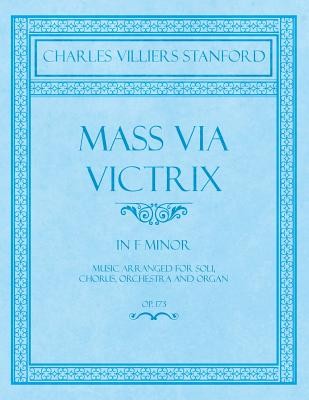
- We will send in 10–14 business days.
- Author: Charles Villiers Stanford
- Publisher: Classic Music Collection
- Year: 2018
- Pages: 136
- ISBN-10: 1528707087
- ISBN-13: 9781528707084
- Format: 21.6 x 27.9 x 0.7 cm, minkšti viršeliai
- Language: English
- SAVE -10% with code: EXTRA
Mass Via Victrix - In F Minor - Music Arranged for Soli, Chorus, Orchestra and Organ - Op.173 (e-book) (used book) | bookbook.eu
Reviews
Description
Sir Charles Villiers Stanford (1852 - 1924) was an Irish composer, conductor, and teacher of music. He was educated at the University of Cambridge and continued his studies in Berlin and Leipzig. He was a very influential composer, responsible for making Cambridge University Musical Society an internationally-acclaimed organisation. Stanford was also a profuse composer, producing a large corpus of work in many genres; however, he is perhaps best remembered for his Anglican choral works for church performance. This volume contains the complete sheet music for Charles V. Stanford's "Mass Via Victrix, Op. 173", a musical composition for solo voice, chorus, orchestra and organ in F minor. This beautiful piece will appeal to fans of classical music, and it is not to be missed by collectors of Stanford's seminal work. Many vintage books such as this are becoming increasingly scarce and expensive. We are republishing this volume now in a modern, high-quality edition complete with a specially commissioned new introduction on the history of musical notation.
EXTRA 10 % discount with code: EXTRA
The promotion ends in 23d.11:56:38
The discount code is valid when purchasing from 10 €. Discounts do not stack.
- Author: Charles Villiers Stanford
- Publisher: Classic Music Collection
- Year: 2018
- Pages: 136
- ISBN-10: 1528707087
- ISBN-13: 9781528707084
- Format: 21.6 x 27.9 x 0.7 cm, minkšti viršeliai
- Language: English English
Sir Charles Villiers Stanford (1852 - 1924) was an Irish composer, conductor, and teacher of music. He was educated at the University of Cambridge and continued his studies in Berlin and Leipzig. He was a very influential composer, responsible for making Cambridge University Musical Society an internationally-acclaimed organisation. Stanford was also a profuse composer, producing a large corpus of work in many genres; however, he is perhaps best remembered for his Anglican choral works for church performance. This volume contains the complete sheet music for Charles V. Stanford's "Mass Via Victrix, Op. 173", a musical composition for solo voice, chorus, orchestra and organ in F minor. This beautiful piece will appeal to fans of classical music, and it is not to be missed by collectors of Stanford's seminal work. Many vintage books such as this are becoming increasingly scarce and expensive. We are republishing this volume now in a modern, high-quality edition complete with a specially commissioned new introduction on the history of musical notation.


Reviews